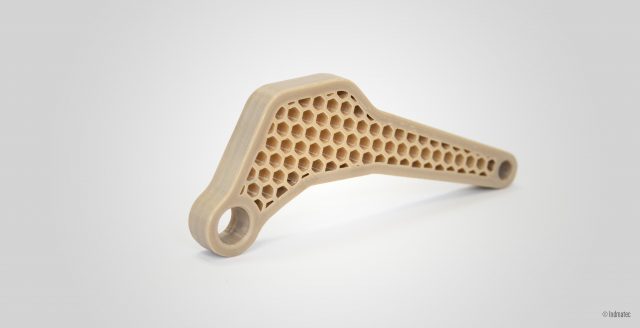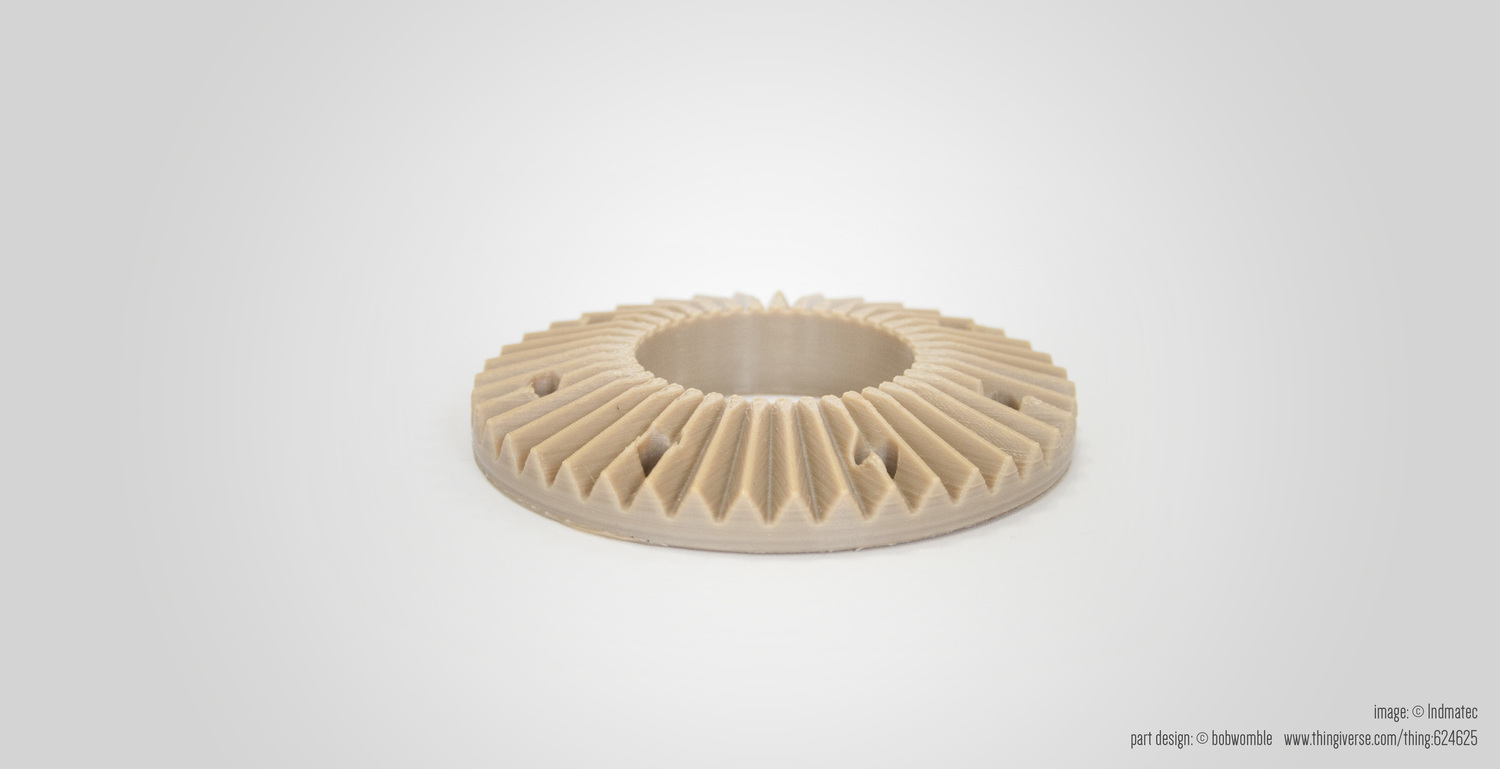In automotive sector, materials are needed that are not just durable, to improve the reliability of a vehicle, but also have to bring several properties with them, like chemical inertness, temperature resistance or wear resistance. Thereby it is guaranteed to have more durable parts with less maintenance. On the one hand it is a big plus for the consumer, because he can save costs, on the other hand also for the manufacturers who will have a higher quality in their automobiles due to the fact that parts have to be replaced less, which results in a better image.
To this point metals have been the materials of choice, since they combine all required properties. However, a big disadvantage is the weight. With less weight fuel can be saved, which results in reducing CO2 emission. A thought that appears more often these days.
PEEK replaces metals
This is possible thanks to a high performance polymer called PEEK (Polyetheretherketone). Due to its semi crystalline structure, it can be used very well above its glass transition temperature of 143°C and fits just perfect in the automotive sector where parts in the powertrain and motors have to operate at 150°C or more, most of the time. PEEK parts can also be used with higher temperatures, due to its melting point of 343°C and a service temperature up to 260°C.
Besides the mechanical resilience of PEEK, the polymer is chemical inert. This is important for parts in the powertrain, which shouldn’t receive damage from the different fluids, like oils or fuels. Applications are for example wear parts that were made out of metal before. Using PEEK instead of metal, the weight of a part can be reduced by up to 70%, which results in a total saving of 1-2% of fuel. Furthermore, the wear of PEEK parts is 25-75% less than the one for metals; the parts are also more resistant facing too little lubricant. Another advantage compared with metals is the reduction of noise.
3D printed PEEK parts
The most effective manufacturing method for PEEK is 3D printing. Hereby, parts which are impossible to be produced with conventional methods, due to their complex geometries can be fabricated. Much more important is the potential to save on material. For example, in the FFF (fused filament fabrication) technology a polymer wire, the filament, is being melted with a nozzle and laid down layer by layer. Doing so, only the material that will be in the part is used. Compared to CNC milling, where up to 90% of the used material will become shavings, depending on the application, 3D printing reduces the material costs significantly.
Although the FFF method cannot be used for mass production adequately, it will provide e.g. the research and development with prototypes without big efforts. In addition to that, individual parts can be produced and small batches are possible, too. Figure 1 and 2 are showing 3D printed PEEK parts that can be installed in powertrains. Both parts are manufactured by an Indmatec HPP 155 3D printer.
The main benefit of gears made out of PEEK is the wear resistance towards the forces, which appear between the gears. PEEK sealing rings hold the advantage to be resistant towards fluids in automobiles, making them more durable.
A decisive criterion in producing functional parts with additive manufacturing methods is if the strength of those parts is comparable to conventional manufactured products. Figure 3 shows a tensile strength comparison between PEEK manufactured with selective laser sintering (SLS), Indmatec’s FFF and powder injection molding (PIM). In this connection, it’s noticeable that the FFF technology is quite in the range of injection molding, regarding their tensile strength. The tests have been made in X/Y direction, due to the layers the tensile strength in Z direction is about 30% lower.

Besides the possibility to fabricate complex geometries with 3D printers, parts in lightweight construction can be produced too, as figure 4 shows. With injection molding those constructions wouldn’t be possible. Thanks to the honeycomb structure, the strength is about the same as the strength of a solid printed part, but with a significant reduction regarding weight and material.

3D printing in combination with high performance polymers, like PEEK, could be an alternative to manufacturing metal parts in the automotive sector, to make vehicles more efficient and to realise an idea towards the final product in a simpler way.
Subscribe to our Newsletter
3DPresso is a weekly newsletter that links to the most exciting global stories from the 3D printing and additive manufacturing industry.























